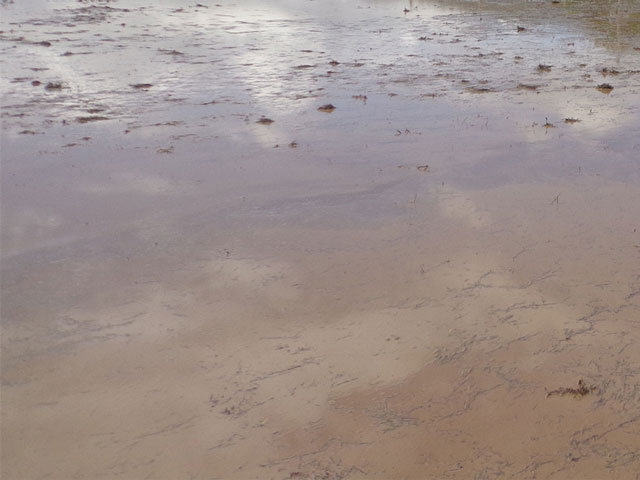Soil too soft
What it does
 Soils that are too soft have poor crop emergence and poor stand establishment.
Soils that are too soft have poor crop emergence and poor stand establishment.
Why and where it occurs
The problem of soil being too soft occurs in wet direct-seeded systems where insufficient time is given for the soil to settle between final wet land preparation (e.g., puddling) and sowing.
How to identify
Check the field for the following symptoms:
- poor crop emergence in direct-seeded fields
- plants fail to emerge, as seeds sink too deep and have problems of reaching the soil surface
The pattern of damage across the field can be general, but often occurs in low spots of the field with standing water.
There are various problems affecting crop establishment. These are cloddy soil, seed too deep, soil too soft at seeding, poor emergence in low spots in fields, heavy rainfall at seeding, soil crusting, poor seed quality, low seed rate, water stress, muddy water at seeding, clogged seeder and/or pests such as ants, birds and rats that remove seed at planting.
To confirm cause of the problem, check or ask the farmer about soil conditions at the time of direct seeding. Check if seed has sunk to more than 0.5 cm depth. Check soil consistency. The problem is likely to be the consistency of the soil-water mix.
Why is it important
Good planting or crop establishment lays the foundation for good yield.
If soils are too soft the crop stand in direct-seeded fields can be greatly reduced. Its economic effect is direct due to a reduced plant stand and subsequent yield reduction.
How to manage
Soil consistency is primarily important just at the time of crop emergence.
A general rule of thumb is that the field is ready to be sown when a small “V” channel made in the soil with a stick holds its shape. If the small “V” collapses quickly, it is likely that the soil is still too soft for sowing.







